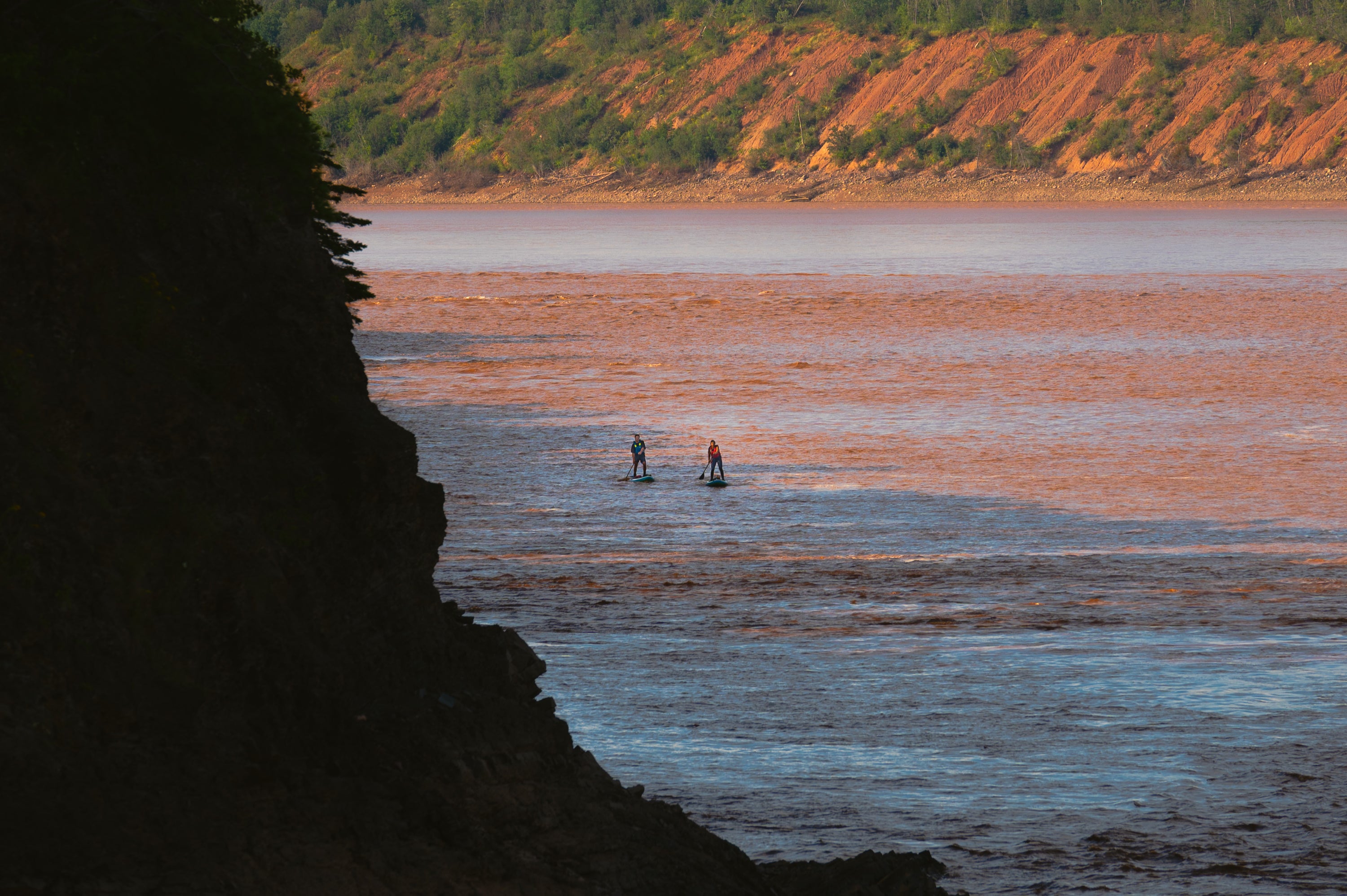
Expedition SUP of Mi'kmaw'ki
- a story by Mariele Guerrero
One of the most beautiful things about expeditions is that each embodies a unique spirit. It comes with its own challenges, obstacles, and unforeseen blessings that teach lessons, derail expectations and open up minds to the incredible strength and beauty of the natural world that lies around us every day when we open our eyes to it.

Last summer, optimistic and untethered by the ephemeral nature of passage on the Atlantic, I set out with a goal of circumnavigating the entire province of mainland Nova Scotia, also known as Mi'kmaw'ki, the unceded and ancestral land of the Mi’kmaq people, by stand-up paddleboard, solo.

The expedition began on the Atlantic shore. Characterized by surf breaks, thick fog, persistent South Westerlies, exposed headlands, deep bays, and small sections of pristine, protected archipelagos, this section of the coastline is harsh, exposed, and full of contradictions. The only certainty of travel along this coastline is the inherent uncertainty of its rapidly changing weather systems.
In the early hours of the morning, the sea offered its most viable windows of passage. The rising sun danced on the horizon, painting the gentle Atlantic hues of pink and blue in the sky's reflection. Mild swells rolled in with perfect timing, quietly roaring as they crashed into the sloping granite shoreline. What a beautiful contradiction to see an environment so harsh in such a peaceful state. But in those moments, while I found myself surrounded by overwhelming beauty, the calm was unnerving. As I watched the sunrise over the flat glassy ocean, all I could see was a ticking time bomb. I didn't have a minute to spare to embrace this cathartic paradox. I knew the stillness wouldn't last, these moments of tranquility on the Atlantic are fleeting, and if I wanted to circumnavigate the entire coastline of Mi'kmaw'ki, I had to make the most of it.

Somedays, along the exposed areas of the Atlantic shore, the horizon line disappeared. All that remained in its place was a succession of giants. I watched swell sets swiftly build until they stood right beside me, the largest of them three to four metres in height. Waves pounded off headlands and point breaks; vicious rip currents and hidden shoals produced turbulent waves that sent fountains of seafoam flying through the air. The only viable route was offshore. Paddling roughly one and a half kilometres away from the safety of the coastline, not another watercraft in sight, I entered a rhythmic state of flow, paddle dipping in and out of the water like a metronome, mind and body working as one, awareness fully present in form–almost. I was paddling at the edge of my mental and physical capabilities, alone, in a dramatic and awe-inspiring environment. But I didn't have time to embrace the experience.
Five weeks into the expedition, after 23 days of paddling and much humility, I completed the Atlantic coast. The next section was the Northumberland Strait. Tucked in the shelter of Prince Edward Island, the calm waters of the Strait provided gentle paddling and time for reflection. After many long days on my own on the water, my friend Dan joined me. The warmth of companionship, late-night driftwood fires on the red sand beaches, and impromptu afternoon clam-digging overshadowed the constant desire to keep moving. When the Northumberland Strait came to an end, I took a car shuttle to the top of the Shubenacadie River, where I prepared to enter one of the most intimidating sections of the route, well-known for having some of the highest tidal fluctuations in the world: The Bay of Fundy. Back to business, time to finish my circumnavigation.

The Shubenacadie River is famous for its tidal bore phenomenon, 10 to 15 metres tidal range, and 10 to 20 kilometre per hour currents. Every day, with the flowing tide, a wall of water rushes up the muddy, mineral-rich river leaving in its wake a series of tumultuous whitewater rapids and standing waves. The tidal currents are too strong to paddle, and the paddler is perpetually at the mercy of the tides, the cycle of the moon, and the position of the planet in the solar system. The red sandstone cliffs tell ancient stories about the earth's history and the many species that roamed the land long before humans, a constant reminder of the fleeting nature of our lives as individuals and existence as a species. Any feeling of desire, or obligation, to circumnavigate the entire coastline was gone. The objective hazards in front of me, which previously evoked anxiety and frustration, now summoned feelings of awe and gratitude.

I surrendered to the ebbs and flows of the tide, and with them, my objective-based ego floated away. I spent seven days paddling the tidal bore. Twelve hours a day: surfing the flow upriver and riding the ebb downriver. This expedition was never about conquering this coastline; it was always about connecting with it.

After three months, 1213 kilometres of paddling and 31 kilometres of portaging, I completed the expedition. I didn't achieve my original goal, but I got more out of this experience than I ever thought I would. The Mi'kmaw'ki coastline taught me how to look at obstacles and see more than just the swirling thoughts of my mind. Instead, I learned to see nature in its truest form, beauty.
Words Mariele Guerrero